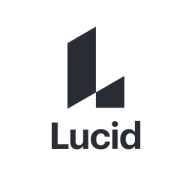

Find out what your peers are saying about Microsoft, Lucid Software, diagrams.net and others in Mind Mapping Software.
| Product | Market Share (%) |
|---|---|
| Lucidchart | 24.8% |
| Visio | 29.6% |
| draw.io | 16.0% |
| Other | 29.599999999999994% |
| Product | Market Share (%) |
|---|---|
| Sparx Systems Enterprise Architect | 11.3% |
| LeanIX | 13.1% |
| erwin Data Modeler | 8.8% |
| Other | 66.8% |


| Company Size | Count |
|---|---|
| Small Business | 23 |
| Midsize Enterprise | 14 |
| Large Enterprise | 21 |
| Company Size | Count |
|---|---|
| Small Business | 38 |
| Midsize Enterprise | 20 |
| Large Enterprise | 58 |
Our online diagram application makes it easy to sketch and share professional flowchart diagrams. From brainstorming to project management, we support all of your communication needs. That’s why millions of users choose Lucidchart.
Sparx Systems Enterprise Architect is an enterprise solution that helps streamline, accelerate, and integrate software, system, and business development. With this intuitive modeling and design solution, enterprises can stay in control of their workplaces, enable collaboration, support their teams and colleagues, and manage complex projects. Software architects, business analysts, project managers, developers, support staff, and testers can unite under a single repository. Through numerous view points and potential sub-systems, users are offered a unified view in a complex environment.
With Sparx Systems Enterprise Architect, users are also offered a shared model option which can be accessed quickly and securely by in-office and remote team members through the Enterprise Architect’s Pro Cloud Server. Building a coherent, verifiable model can be done by connecting and integrating a variety of behavioral and structural information in visual form. As a result, Enterprise Architect offers high performance, flexibility, and the ability to model, manage, and trace every stage of the business development and modeling process.
Sparx Systems Enterprise Architect Features
Sparx Systems Enterprise Architect assists in creating a unified and accessible vision in business development by offering a flexible platform with a unique set of rich features. These features include:
Reviews from Real Users
Sparx Systems Enterprise Architect merges high-end tools, online availability, a dedication to open standards, and accessible pricing so enterprises can stay in control of their workplaces, whether remote or in-office. Users particularly like the architectural frameworks and the scalability.
Marc L., a principal architecture enterprise solution adviser at Cronomagic Canada, notes, "The product offers very good support for all mainstream modeling notations and architectural frameworks."
An enterprise architect at a manufacturing company writes, "Scalable solution for modeling, project sharing, and collaboration. Support for it is good."
We monitor all Mind Mapping Software reviews to prevent fraudulent reviews and keep review quality high. We do not post reviews by company employees or direct competitors. We validate each review for authenticity via cross-reference with LinkedIn, and personal follow-up with the reviewer when necessary.